Coffee grounds have become famous for improving the health of plants. Lots of gardeners use them to adjust the acidity and Nitrogen level. But, will Hibiscus plants accept coffee grounds? Let’s figure it out.
Hibiscus plants can benefit from the occasional use of coffee grounds as alternate fertilizers. Adding coffee grounds gives your plant nutrition and acidity to keep it healthy, happy, and thriving. However, excessive use can have adverse effects like legginess or bacterial growth.
There is a lot to know about the usage of coffee grounds in the Hibiscus plants. This article will explain using coffee grounds and its merits and demerits. So, let’s begin without further delay.
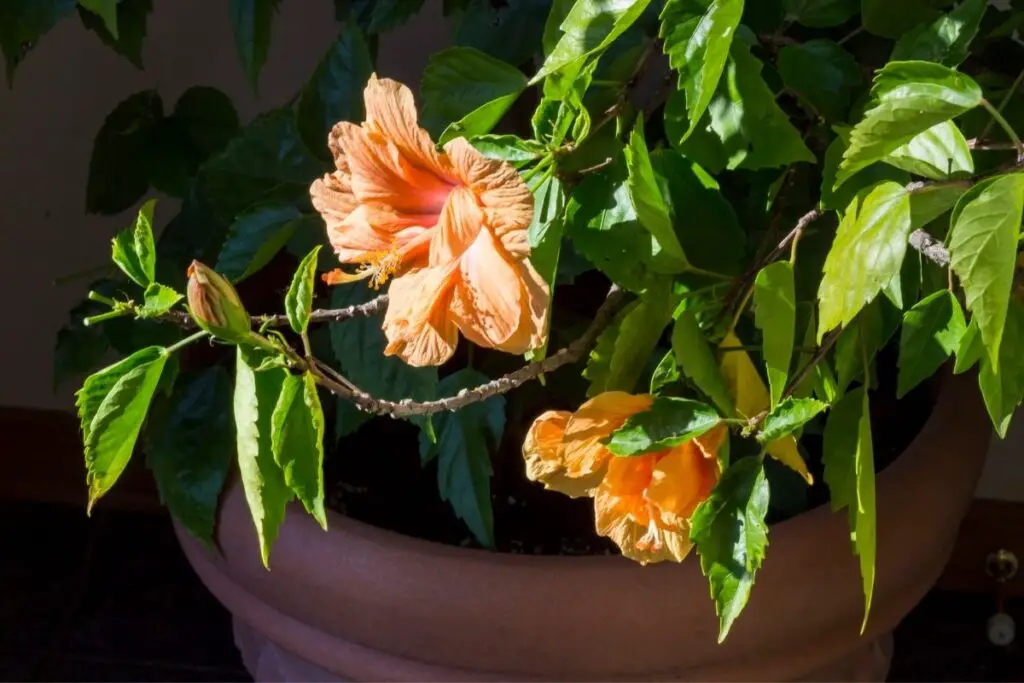
Are coffee grounds good for Hibiscus plants?
Coffee grounds are considered the best boosting ingredient for Hibiscus plants.
It helps the plant receive the necessary nutrients for growth and development.
Coffee grounds can make the Hibiscus soil pretty acidic if it is not acidic or too alkaline.
Will Hibiscus like used coffee grounds?
Hibiscus will love to receive the used-up coffee grounds.
It will help lower the soil’s pH levels and improve its drainage system.
It also attracts micro-organisms and useful bacteria to improve the soil’s nutrition level.
Will Hibiscus love fresh coffee grounds?
In most cases, used coffee grounds are applied to the Hibiscus plants.
But, they also seem to accept the fresh, unused coffee grounds.
It is also preferred more if you want to increase the acidity level.
Fresh coffee helps raise the acidity level more than the used coffee.
Besides, fresh coffee is rich in nitrogen and many other organic matters, which can improve the plant’s health to a great extent.
Will perennial Hibiscus varieties like coffee grounds?
Hardy or perennial varieties will also benefit from coffee grounds like regular ones.
Coffee grounds improve the soil’s quality by adding essential minerals to the soil.
Hardy Hibiscus enjoys lower pH levels, and using coffee ground will help make the soil perfect for the perennials.
Benefits of using coffee grounds
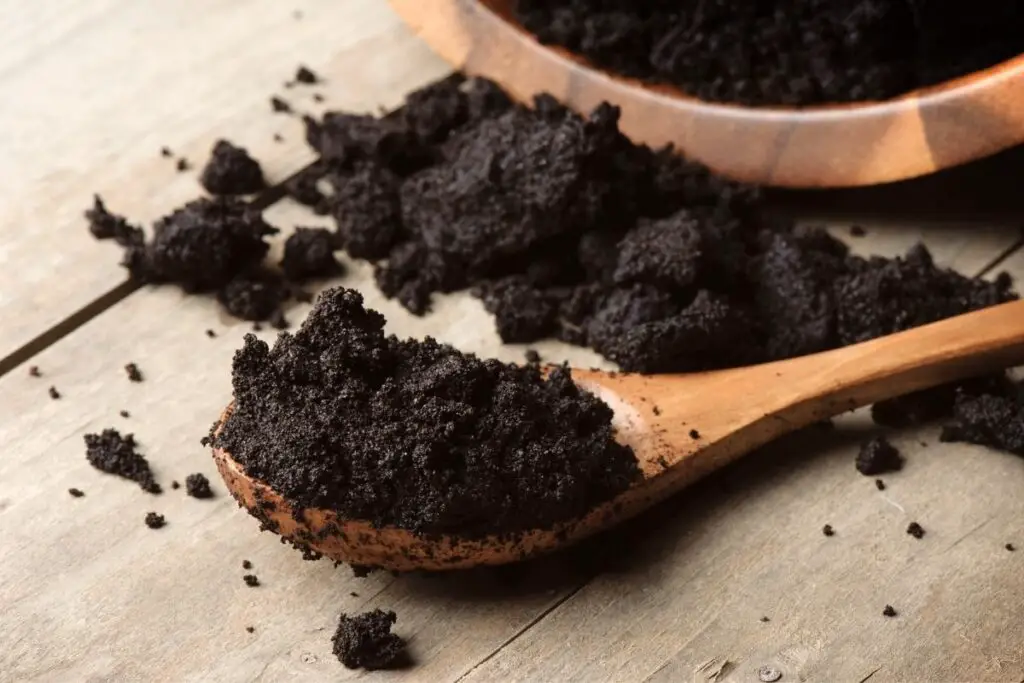
There are a lot of benefits of using coffee grounds.
Using them will improve the soil’s quality and the plant’s overall health and development.
Here are some merits of using coffee grounds:
Increasing the acidity levels
Lowering the pH levels and adjusting the soil’s acidity level are the two major benefits Hibiscus receives when applied with coffee grounds.
Freshly brewed coffee will help increase the acidity level more than the used coffee grounds.
Remember that the pH level of Hibiscus ranges between 6.5 and 6.8.
You should only use it if the soil is too alkaline.
Before adding the coffee grounds, test the soil to know the pH level.
Looking for gardening supplies? We have tested 100's of products before recommending them to you guys. Check out our best pick below:
| Image | Gardening Supplies | Best Price? |
|---|---|---|
 Top
Top Top
Top | Raised Garden Bed Kit | Check On Amazon |
 | XLUX Soil Moisture Meter, Plant Water Monitor, Soil Hygrometer Sensor for Gardening, Farming, Indoor and Outdoor Plants, No Batteries Required | No Results |
 Top
Top Top
Top | 82 Pcs Garden Tools Set and Extra Succulent Tools Set | Check On Amazon |
 | Joeys Garden Expandable Garden Hose with 8 Function Hose Nozzle, Lightweight Anti-Kink Flexible Garden Hoses, Extra Strength Fabric with Double Latex Core, (50 FT, Black) | No Results |
 Top
Top Top
Top | Dual Chamber Compost Tumbler | Check On Amazon |
 Top
Top Top
Top | Sunnyglade Plant Stakes | Check On Amazon |
 Top
Top Top
Top | Organic Cold Pressed Neem Seed Oil | Check On Amazon |
 Top
Top Top
Top | Mighty Mint Gallon :-Insect and Pest Control Peppermint Oil | Check On Amazon |
 Top
Top Top
Top | Scotts DiseaseEx Lawn Fungicide | Check On Amazon |
 Top
Top Top
Top | Jacks Classic 20-20-20 All Purpose Fertilizer | Check On Amazon |
 Top
Top Top
Top | 30,000 Seeds Pollinator Attracting Wildflower Mixture | Check On Amazon |
 Top
Top Top
Top | Survival Vegetable Seeds Garden Kit-Over 16,000 Seeds | Check On Amazon |
Nutrients
Hibiscus enjoys soil packed with nitrogen, phosphorus, potassium, magnesium, calcium, etc.
Nothing can provide your plants with these minerals and nutrients other than coffee grounds.
Since fresh coffee grounds are a great nitrogen source, add some to increase the nitrogen if Hibiscus ever lacks it.
But don’t increase the nitrogen level too much because Hibiscus needs an average nitrogen level for a bush of green leaves.
They need potassium at high levels and low phosphorus.
Improve retention and drainage
Coffee grounds hold moisture levels to a great extent.
It expands the plant’s retaining capacity, which is favorable for Hibiscus because it enjoys moist soil.
Besides, you can water less often.
Coffee grounds add organic matters to your soil.
It further helps in improving the drainage system of your soil.
It will ensure that water doesn’t accumulate around the roots.
Beneficial micro-organisms
Coffee grounds also attract micro-organisms helpful for the plant’s health.
It also helps deter worms and organisms that are harmful to the plant.
It also invites useful worms which can break down the compost and keep the plant happy by improving the health of the roots.
Improves soil structure
Since coffee grounds add organic matter to the soil, it enhances the structure of the soil.
Due to organic matters, the quality of the soil improves, and so does the health of the plant.
It also allows better retention and drainage.
Keeps away pets and bugs
Adding coffee grounds to the soil bed can keep animals like cats and dogs away from your plant.
They don’t enjoy the strong smell of the coffee grounds and don’t wander around your plant again.
Unused coffee grounds hold a strong smell that the bugs do not like.
It works better if burnt a little and used as an essence.
The burning smell of the coffee will keep maximum bugs away.
How to use coffee grounds for Hibiscus?
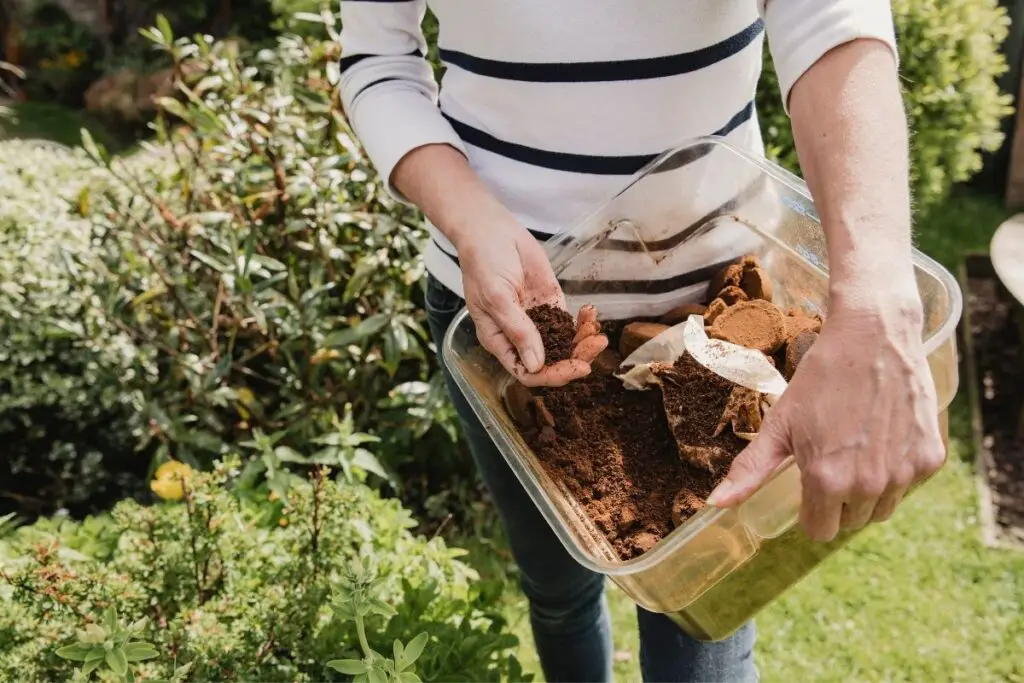
Adding coffee grounds will only profit the plant if added in the right way.
It will avoid confusion and show results as expected.
Dried up coffee grounds
Most gardeners will use dried-up coffee grounds.
Once you have got the used coffee grounds, collect them in the newspaper and dry them out under the sunlight for 2-3 days.
Once they have completely dried out, sprinkle them over the soil bed and around the plant base.
It will work as a good fertilizer for Hibiscus plants.
Likewise, you can add fresh coffee grounds to increase the soil’s acidic and nitrogen levels.
Direct use of coffee grounds
It is one of the easiest ways of applying coffee grounds.
Directly add the used coffee grounds to the soil bed without drying up.
You can also use unused coffee grounds.
They have 1.45% of nitrogen.
Direct application will give the plant enough Nitrogen, keep harmful worms away, and enrich the acidity level.
In compost bin
It is another efficient way of using coffee grounds.
Mix the used coffee grounds with the other compost matter and food scraps in a compost bin.
Let it sit for a couple of days.
Then, put the composted coffee grounds into the soil.
This compost pile will give Hibiscus lots of minerals, magnesium, calcium, etc.
As a DIY liquid fertilizer
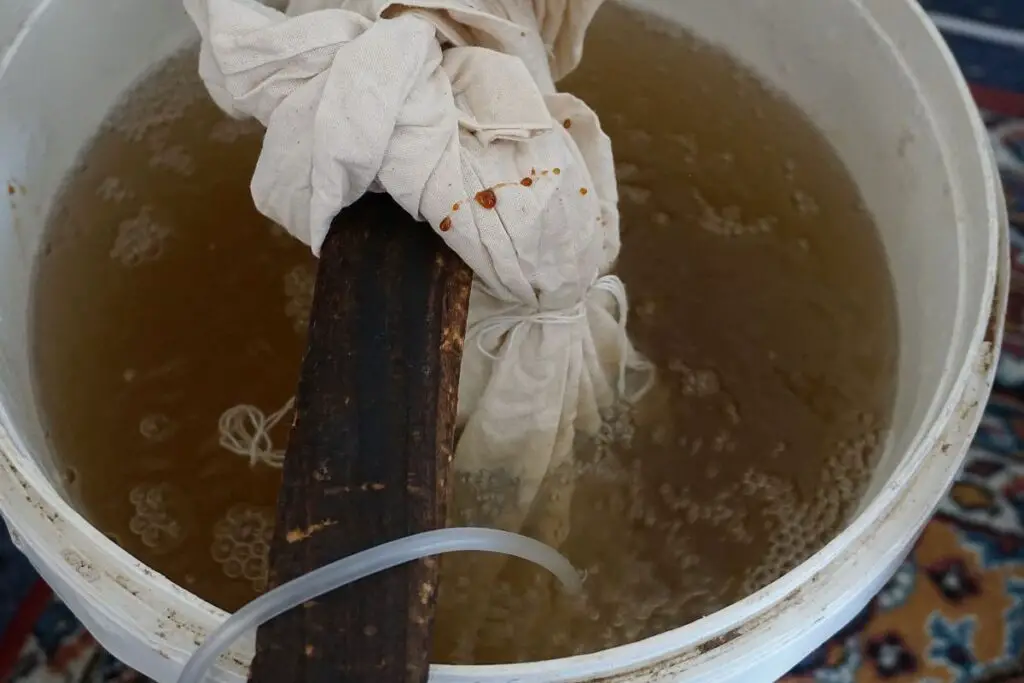
Take some water in a container and let it simmer on gas.
Turn it off and let it cool down.
Once the water cools down, add coffee grounds to it and keep the mix aside for a few days.
Once the coffee grounds break into the water, strain it and use it as liquid fertilizer on your Hibiscus.
How often can I use coffee grounds?
Coffee grounds are valuable in many ways.
It improves soil acidity and provides the plant with essential nutrients like nitrogen, potassium, magnesium, calcium, etc.
It also enhances soil quality and structure.
Though there are many advantages of using coffee grounds, excessive use is not good.
Hibiscus plants are heavy feeders.
If you use coffee as water-soluble fertilizer, use it every 2 weeks during the growing months.
Make sure the coffee is well-diluted.
If you use it as a time-release, apply it every 3-6 months and avoid it during the winters.
Before the next application, consider a soil test to know which nutrients are still there in good amounts.
Ensure not to use excessive amounts of coffee grounds because there are many negative effects to using it in high quantities.
Also read: What Is A Good Fertilizer For Hibiscus Plants? (Ideal Ratio+Best Pick)
What are the adverse effects of using coffee grounds on Hibiscus?
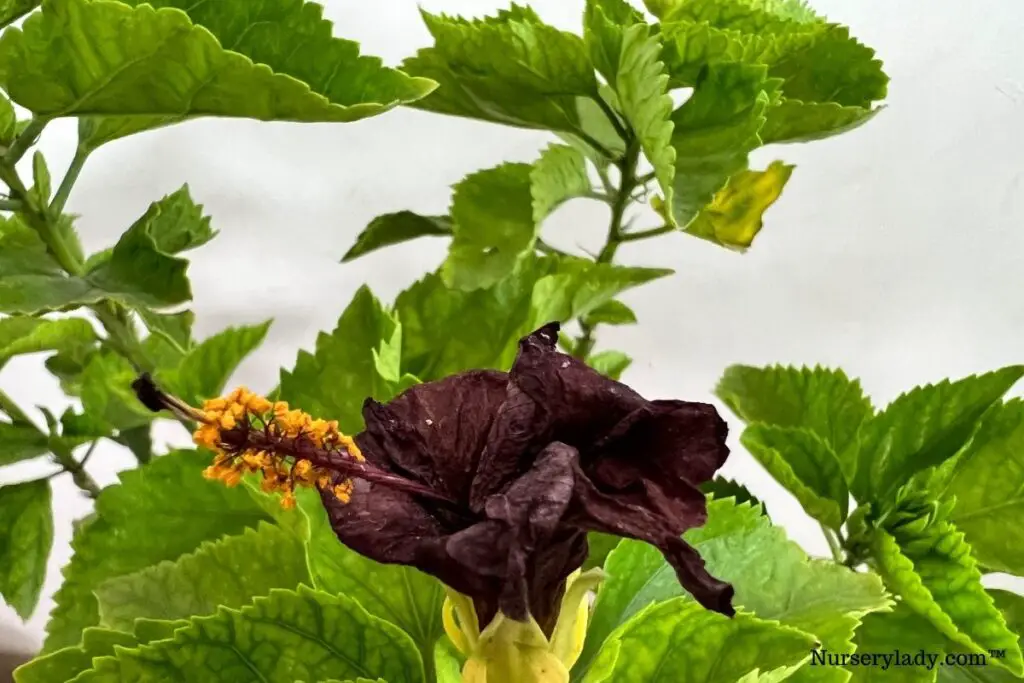
Using coffee grounds will have drawbacks if you use them in high quantities.
Since coffee increases the soil’s pH and nitrogen levels, a frequent application will lead to abnormal plant growth.
Check for certain signs to understand whether the plant has any issues after using coffee grounds.
Stunted growth
Using excessive coffee grounds increases the soil’s pH level and disturbs the plant’s growth and development.
The plant cannot absorb the other essential nutrients from the soil due to improper soil pH levels.
Due to this disturbance, the plant fails to grow properly.
The consequence is stunted growth.
Before applying coffee grounds to your plant, check the soil before use.
Also read: Why Is My Hibiscus Plant Not Growing? (Causes+How To Fix)
No blooming
Extreme use of coffee grounds adds extra nitrogen content to the soil.
Since nitrogen improves the leaf color and growth, excessive nitrogen will make the plant concentrate more on the leaf growth than on the blooming.
Therefore, the plant won’t have any blooming, even if it is spring and summer.
Also read: Why Won’t My Hibiscus Bloom? (+How To Make Hibiscus Bloom)
Leggy growth
Nitrogen also boosts the plant’s growth.
Excess application of coffee grounds increases the nitrogen level and makes the plant grow wild and leggy.
Legginess will make the plant grow tall and lean over.
Yellow leaves
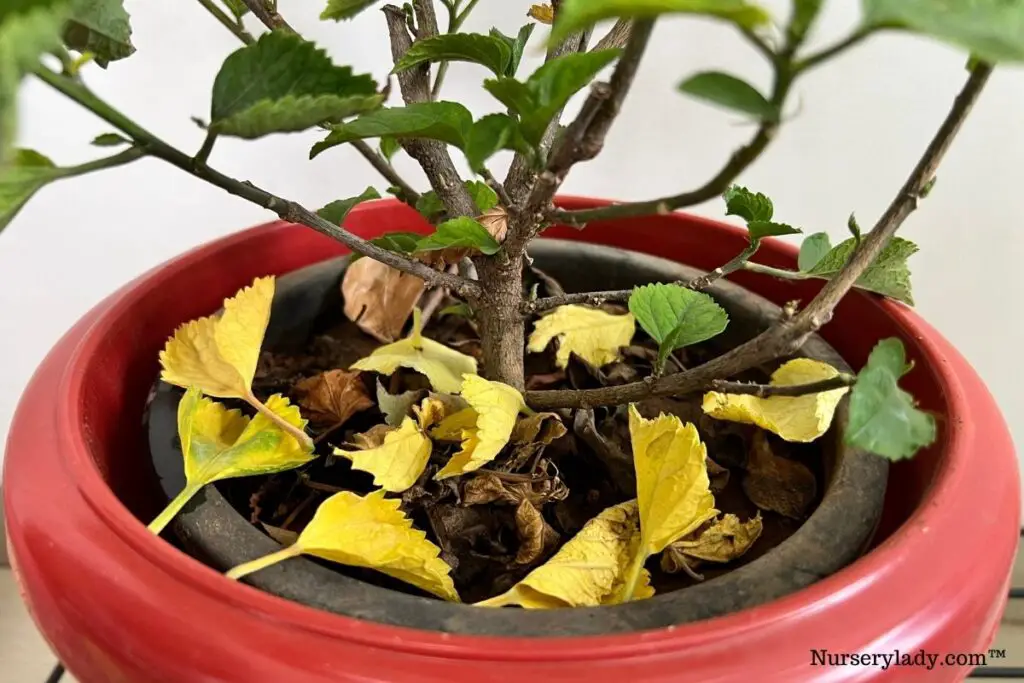
Using coffee grounds too often increases the soil’s acidity level significantly.
It further renders an imbalance in the soil’s pH level.
When the pH level gets imbalanced, it blocks the plant from absorbing the other nutrients from the soil.
As a result, the plant suffers from nutrient deficiency and causes yellow leaves with green veins.
This condition is also called chlorosis.
Also read: Why Are My Hibiscus Leaves Turning Yellow? (Causes+Fix)
Increases moisture retention
Coffee grounds can heighten the soil structure by adding organic matter to the soil.
It rises the plant’s retention qualities.
The soil will not drain the excess water if the retention qualities increase.
It can further give rise to overwatering and root rot.
Kills good bacteria
Coffee has lots of antibacterial properties.
Soil contains many good bacteria, which improve the plant’s health and keep pests and diseases away.
Due to these antibacterial properties, adding excessive coffee kills these good bacteria.
The damage of these bacteria further makes the soil susceptible to pests and diseases.
How to fix a stressed Hibiscus due to excess coffee grounds?
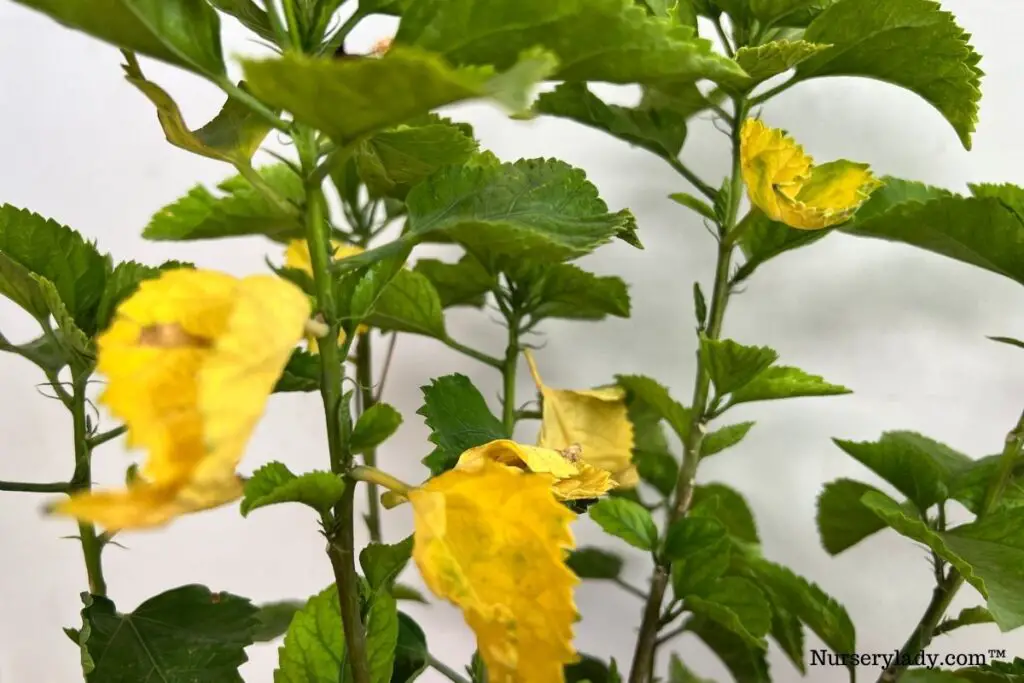
Maybe you have used lots of coffee grounds without any measurements.
In that case, the soil’s acidity level will increase along with the nitrogen level.
To amend the situation:
- Stop using coffee grounds and water your Hibiscus thoroughly. Make sure not to overwater it.
- To correct the soil pH or acidity level, add lime or dolomite.
- Don’t transplant or repot your plant right now. It is already stressed with high pH and nitrogen levels. Transplanting will give them another shock.
- Stop fertilizing your plant for some weeks.
- Don’t expose your plant to direct sunlight.
- Continue this until you find any signs of new growth.
- Once you notice new growth, mist the leaves to maintain hydration.
- Use a Growth Enhancer to boost the stressed plant. Use only plain water if you don’t have it.
Final thoughts
Coffee grounds can be both fruitful and harmful for the Hibiscus plants. It depends on the frequency and amount of application.
It is good to use coffee grounds. It increases the soil’s acidity level, adds nutrients, improves retention and drainage, and keeps bugs and pet animals away.
At the same time, the absurd application of coffee grounds can badly affect the plant’s health. Excessive nitrogen and improper soil pH levels cause stunted growth, no blooming, or leggy growth.
So, you should first consider a soil test before applying to ensure whether the plant needs it or not. And also, after applying it, to decide on re-application.
Reference: Wikipedia, ASPCA, Louisiana State University Agricultural Center, American Society for Horticultural Science, Tropical Hibiscus by Texas A&M University, Sciencedirect.
